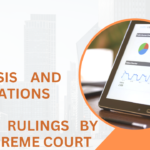Getting car insurance for the first time can be confusing and expensive for new drivers. Here is a comprehensive guide to understanding car insurance and getting the best rates as a new driver.
Thank you for reading this post, don't forget to subscribe!Factors That Affect Car Insurance Rates for New Drivers
Car insurance rates are based on risk. New drivers are considered higher risk than experienced drivers, so insurers charge them higher premiums. Here are some of the main factors that affect car insurance rates for new drivers:
- Age – Teenage drivers pay the highest rates. Statistics show drivers aged 16-19 are more likely to get into accidents than any other age group. Rates start decreasing at age 20 and keep dropping until the driver reaches 25.
- Gender – Young male drivers generally pay more than females, especially teens. Male teens are statistically more likely to engage in risky driving behaviors.
- Location – Insurance rates are higher in densely populated areas due to increased risk of accidents, theft, vandalism, etc. Suburban and rural areas tend to have lower rates.
- Driving Record – A clean driving history with no tickets, accidents, or claims will qualify new drivers for the lowest rates. Even minor violations can increase premiums significantly.
- Credit History – Insurers view drivers with poor credit as more high-risk. Maintaining good credit will help new drivers get better rates.
- Coverage Type – Minimum liability coverage is cheaper than comprehensive and collision policies which cover damage to your vehicle. But comprehensive and collision provide important protection for new cars.
- Vehicle Make and Model – Insuring a new luxury car will be significantly more expensive than insuring an older, less valuable car. Sports cars and vehicles with high accident rates also cost more.
- Insurance Company – Rates can vary a lot between insurers for new drivers. It pays to compare quotes from different companies.
How to Get the Best Rates on Car Insurance as a New Driver
The high cost of policies makes shopping around essential for new drivers looking for affordable coverage. Here are some tips to find the lowest car insurance rates:
- Compare quotes from at least 5-10 different auto insurance providers. Online quote tools make this easy.
- Ask about discounts available to students with good grades, drivers who take defensive driving courses, cars with safety features, etc.
- Consider placing the new driver on the same policy as their parents or getting a non-owner policy if they rarely drive.
- Remove any unnecessary coverage like rental reimbursement or roadside assistance to lower premiums if money is tight. Raise the deductibles to reduce monthly payments.
- Choose an older, lower-value, safety-equipped vehicle that qualifies for lower rates. Avoid high-end, high-performance cars.
- Ask about usage-based programs that provide discounts for driving less and avoiding late-night trips.
- Consider getting liability-only coverage if your vehicle is over 8-10 years old. Keep in mind this provides no coverage for your car’s damage.
- Maintain a good driving record with no accidents, speeding tickets, or other violations to keep rates as low as possible.
- Ask about discounts for completing a state-approved defensive driving course. Also, look into driver’s education discounts.
- Pay your premium in full rather than in monthly installments to avoid finance fees and keep costs down.
Required Minimum Car Insurance Coverage
Liability insurance is mandatory in most states. This coverage pays for injury or damage that the policyholder causes in an accident. Here are the minimum liability requirements in most states:
- Bodily Injury Liability: Covers medical bills for people injured or killed in an accident caused by the insured driver. Minimum limits are typically $25,000 per injured person/$50,000 per accident. Some states require $30,000/$60,000 limits.
- Property Damage Liability: Pays for damage to another vehicle or property in an accident caused by the insured. The minimum limit is typically $25,000.
- Uninsured/Underinsured Motorist Coverage: Compensates for injuries caused by a driver with no insurance or insufficient coverage. Required in some states.
New drivers should consider getting more than the minimum liability coverage, especially if they drive a newer vehicle. Higher liability limits and adding comprehensive/collision coverage is wise for more protection.
How to Get the Cheapest Car Insurance for Young Drivers
Here are some tips to get the lowest possible rates on car insurance for teen and young adult drivers under 25:
- Have your teen get a driver’s license as early as possible. Rates start dropping at age 16.
- Enroll your teen in a Pass Plus or defensive driving course for potential discounts.
- Add your teen to your policy rather than a separate policy to save money.
- Consider getting a minivan or another safe, used vehicle with lots of safety features for your teen.
- Ask about discounts for students with a 3.0+ GPA or away at college without a car.
- Only let your teen drive older vehicles you own outright to avoid collision/comprehensive costs.
- Start your teen on the minimum required limits and raise them as they gain experience.
- Have your teen take a safe driving pledge and set strict limits on times/passengers allowed in the car.
- Look into usage-based programs (like Progressive’s Snapshot) to get discounts for safe driving habits.
- Ask about any discounts for equipping the car with anti-theft devices, backup cameras or other safety features.
- Choose the highest deductible your teen can afford to keep premiums down.
How Adding a Teen Driver Affects Your Car Insurance Policy
When you add a teenager to your policy as a new driver there are several effects:
- Your rates will go up significantly – likely 50-100% or more depending on factors like age, gender, and state.
- You may need to adjust your liability limits to provide adequate coverage for another high-risk driver.
- Your deductibles may change if you alter your collision/comprehensive coverage for a teen driver.
- You’ll want to set some policy use restrictions on your teen driver regarding times they can use the car or passengers allowed.
- Your discounts may change by adding a teen since some discounts won’t apply to them.
- Some carefully consider excluding teen drivers from some vehicles if adding them makes those vehicles too expensive to insure.
- Your insurance company may change if another insurer offers a better price for a multi-vehicle policy with a teen driver.
To minimize the impact of adding your teen, have them take driver’s ed classes, maintain good grades, follow all policy restrictions, and stay accident/violation-free. Consider delaying adding them as a primary driver on additional vehicles unless necessary.
What Types of Discounts Are Available for New Drivers?
Here are some common car insurance discounts new teen and young adult drivers can take advantage of to save money:
- Good Student Discount: Verifying a 3.0+ GPA can provide up to 25% off.
- Driver’s Ed Discount: Completing certified defensive driving courses can save 10% or more.
- Distant Student Discount: Attending school away from home without a car can lower rates up to 25%.
- Low Mileage Discount: Driving less than a specified limit like 10,000 miles/year can save up to 10%.
- Good Credit Discount: Maintaining responsible credit can save up to 50% with some insurers.
- Advance Quote Discount: Getting a quote well in advance of needing a policy can save up to 10%.
- Affinity Discount: Graduating from certain universities or belonging to certain organizations may qualify for 5-15% discounts.
- Anti-Theft Discount: Installing approved antitheft devices can reduce premiums by 15% or more.
- Defensive Driver Discount: Completing a defensive driving course can reduce premiums by 5-15% for 3 years.
- Accident Forgiveness: Allows one accident before rates increase if purchased in advance.
What is SR-22 Insurance and When is it Required?
An SR-22 is a form that at-risk drivers are required to file with their insurer in certain states, proving they have liability insurance that meets state requirements. High-risk drivers required to file an SR-22 include:
- Those convicted of serious traffic violations like DUI or excessive speeding/reckless driving
- Those caught driving without auto insurance
- Those with multiple recent at-fault accidents
- Drivers whose license was suspended or revoked
Filing the SR-22 shows compliance with state insurance minimums. It may be required for up to 3 years. The insurer charges a fee for filing it, usually $15-25. While not required in every state, an SR-22 is necessary for regaining driving privileges in most states. High-risk drivers unable to get insurance from regular companies may need to use their state’s assigned risk pool.
How Convictions Affect Your Car Insurance as a New Driver
Getting tickets, citations, and convictions for moving violations will significantly impact your car insurance rates as a new driver:
- A single speeding ticket can increase your premium by an average of 15%
- Major speeding (20+ mph over the limit) can increase rates by around 30%
- Reckless driving citations can increase premiums by 25-50% on average
- DUI convictions can increase car insurance rates by a whopping 75-100% on average
- At-fault accidents with injuries/damage can increase your premiums by 25-50%
- Multiple minor violations may increase your rate by up to 100%
- Major violations stay on your record for 3-5 years and continue impacting your rates
The more serious the violation, the longer it affects your rates. Maintaining a clean record is critical for new drivers to keep insurance affordable. Taking defensive driving courses can help offset some rate increases.
How to Find the Best Car Insurance Companies for Teenage Drivers
Finding the right insurance company and policy is key to getting affordable rates for teen drivers. Here are some top options:
- State Farm: Offers strong discounts to students for good grades and taking driver’s ed. Also has usage-based options. Often has low rates for young drivers.
- GEICO: Gives discounts for driver’s ed and being away at school without a car. Has a mobile app for parents to monitor teen’s driving. Competitive pricing.
- Allstate: Provides discounts for taking advanced defensive driving courses. Has drive-tracking tools to help improve teen driving skills.
- American Family: Discount for completing driving classes. Lets teens take online risk assessment quizzes to earn lower premiums.
- Nationwide: Gives discounts for completing defensive driver course. Has programs encouraging teens to improve driving habits.
- Travelers: Discounts are available for driver training programs. Provides teen driving resources for parents.
- State Auto: Offers discounts for driver education courses. Rewards teens with accident-free driving.
Research several companies’ teen driver policies and discounts to find the best rate. Having your teen driver on your policy with an experienced driver can also save money with many insurers.
Tips for Parents of New Teenage Drivers
Parents play a key role in helping teens become safe, responsible drivers. Here are some tips:
- Have teens complete driver’s ed and extra defensive driving instruction
- Require at least 30-50 hours of supervised driving practice
- Set limits on driving hours, passengers, and conditions like bad weather
- Consider tracking tools to monitor driving habits and location
- Lead by example and discuss driving risks, laws, etiquette
- Ride along and give feedback on real-world driving sessions
- Check-in on progress periodically after licensure
- Know state GDL laws on restrictions for new licensees
- Enforce seat belt use and prohibit cell phone use while driving
- Let teens earn privileges through demonstrated safe driving
- Limit high-risk exposure like late nights or highway driving
Following these tips helps ensure your teen gets the best insurance rates while developing skills to keep them safe on the road.
Frequently Asked Questions
What age is considered a new driver for car insurance rates?
For insurance purposes, new drivers are generally those under age 25, with the highest rates applying to teens aged 16-19. Rates start dropping when drivers reach age 20-21 and keep decreasing until age 25.
How much is car insurance for a 16-year-old?
Average annual car insurance rates for a 16-year-old are $5,000-$8,000 or more, depending on factors like gender and location. Rates are highest for teen male drivers, who may pay over $10,000 per year.
How much does it cost to add a teenager to car insurance?
Adding a teen to your policy costs $1,000-$4,000 more per year on average. Overall premium increases between 50-100% are common when you add a new teen driver.
What is the cheapest car insurance for young drivers?
The cheapest insurers for young drivers are generally State Farm, GEICO, Progressive, and Allstate. Discounts like a good student, defensive driving, and accident-free driving can help lower rates. Liability-only policies are also cheaper than full coverage.
How can a teenager get cheap car insurance?
Teens can get cheaper insurance by taking defensive driver courses, maintaining good grades, driving safely, choosing an older car to insure, getting on their parents’ policy, limiting mileage, and asking about all available discounts.
Should I only buy liability insurance for my teenager?
Liability-only policies are cheaper but leave your teen’s car unprotected. Many experts recommend starting teens with liability coverage and adding collision/comprehensive when they gain experience. Let your teen contribute to the extra cost for better protection.
What policies can reduce teen insurance rates?
Discounts like good grades and defensive driving courses can reduce teen insurance rates. Policies like usage-based insurance with driving monitoring and accident forgiveness also help keep costs down for teens.
What restrictions do insurers place on policies with teen drivers?
Common restrictions insurers place on teen drivers are limits on driving hours (like no driving after 11 pm), restrictions on passengers (no more than 1 non-family passenger), and usage limits (no driving over 100 miles from home).
Do I have to add my teen driver to my insurance policy?
If your teen primarily drives your car, you legally must add them to your policy. Not listing a teen who regularly uses your vehicle is considered insurance fraud. It also provides no coverage for their accidents.
Conclusion
Getting affordable car insurance as a new driver involves shopping around, maintaining a clean record, taking advantage of all available discounts, finding the right insurer for teens, and minimizing risks through parent oversight and usage restrictions. Following the tips in this guide will help new drivers get the required coverage at the best price. Keys are getting experience under supervision, continuing education, and exhibiting responsible driving habits from the very beginning.










